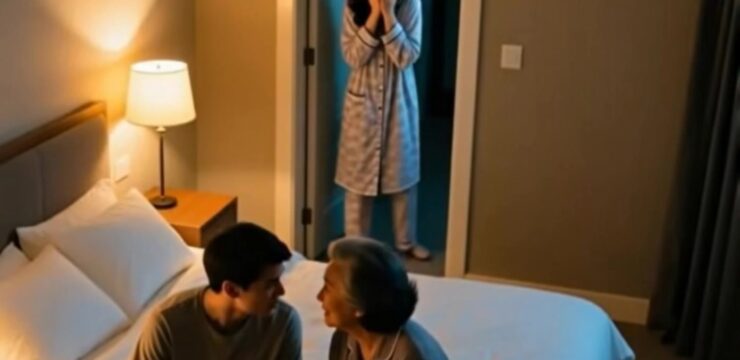
Have you ever gazed at a cloud and suddenly noticed it resembles an animal or a face? Or perhaps you’ve seen patterns on a wooden floor that look like eyes staring back at you? If so, you’ve experienced pareidolia—a psychological phenomenon where our brains perceive familiar patterns, especially faces, in random objects or textures. This intriguing occurrence offers insight into our brain’s wiring and our tendency to find meaning in the chaos around us.
Everyday Encounters with Pareidolia
Imagine walking through the woods and spotting a tree whose bark seems to have a face etched into it. You blink, realizing it’s just a pattern of knots and lines, but the “face” remains unmistakable. Or consider staring at a stucco ceiling and noticing an image that looks uncannily like a familiar animal. These moments highlight our minds’ propensity to seek patterns and familiarity, even where none exist.
Evolutionary Roots of Pattern Recognition
Evolution has played a significant role in this tendency. Our ancestors needed to quickly identify friends from foes, making the rapid recognition of faces crucial for survival. This instinct persists today; our brains are finely tuned to recognize faces almost instantly, enabling us to spot a friend in a crowded room without hesitation. This deep-seated need to identify faces often leads us to perceive them in inanimate objects, such as clouds, car fronts, or even slices of toast.
Artistic Inspiration and Creativity
Artists have long embraced pareidolia as a source of inspiration. Sculptors and painters often draw from natural patterns or random marks, transforming them into deliberate works of art. They see potential where others might see chaos—faces in stone formations or landscapes in paint smudges. This phenomenon fuels creativity, with studies indicating that individuals who frequently experience pareidolia tend to have higher creative potential. Their ability to see connections between seemingly unrelated things sparks storytelling, artistic expression, and innovative problem-solving.
Emotional and Social Connections
Beyond the arts, pareidolia is linked to our emotional and social abilities. Some scientists believe that seeing faces in objects relates to our brain’s capacity to read emotions. Recognizing facial expressions is vital for communication, so our brains may be hypersensitive to anything resembling a face, even if it’s just a random pattern. This hypersensitivity might explain why some people feel comforted by seeing a “face” in an everyday object, while others find it unsettling.
Spiritual and Cultural Significance
Throughout history, pareidolia has influenced spirituality and religion. Many cultures have reported seeing divine images in natural formations—faces of saints in trees, religious symbols in food, and holy figures in rock formations. These experiences often carry profound meaning for those who witness them, reinforcing the human desire to find significance in our surroundings.
Modern Fascination with Pareidolia
In contemporary times, pareidolia continues to captivate. Photos of faces on Mars, mysterious figures appearing in slices of toast, and eerie shapes found in nature often go viral. People love to debate whether these are mere coincidences or something more meaningful, reflecting how deeply ingrained this pattern-seeking ability is in human perception.
Beyond Visual Pareidolia: Auditory Experiences
Pareidolia isn’t limited to sight. Some individuals experience auditory pareidolia, hearing words or melodies in random noise. For example, listening to static and perceiving a faint tune or hearing hidden messages in songs played backward. This auditory phenomenon further demonstrates our brain’s inclination to find patterns and meaning, even in ambiguous stimuli.
The Neuroscience Behind Pareidolia
Neuroscientific studies have explored the mechanisms underlying pareidolia. Research using brain imaging techniques has shown that when people perceive faces in inanimate objects, similar neural pathways are activated as when they see actual human faces. This suggests that our brains are wired to detect facial features rapidly, sometimes leading to false positives when interpreting visual information.
Pareidolia Across Cultures
While pareidolia is a universal human experience, cultural factors can influence the specific patterns or figures people perceive. For instance, in cultures where certain animals hold particular significance, individuals might be more likely to see those animals in random patterns. This cultural lens shapes our interpretations and the meanings we assign to these perceptions.
Embracing Pareidolia in Daily Life
Recognizing and understanding pareidolia can enrich our daily experiences. It encourages mindfulness and a deeper appreciation for the world around us. By acknowledging our brain’s tendency to seek patterns, we can approach these perceptions with curiosity and creativity, allowing them to inspire art, storytelling, and a greater connection to our environment.
Conclusion
Pareidolia is more than just seeing faces in clouds or patterns in randomness; it’s a window into our brain’s remarkable ability to find order and meaning in the world. This phenomenon underscores our innate creativity, our evolutionary history, and our continuous quest to make sense of our surroundings. So, the next time you spot a face in your morning toast or hear a melody in the hum of a fan, remember—it’s just your brain doing what it does best: finding patterns and making connections.





